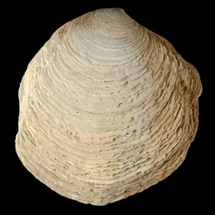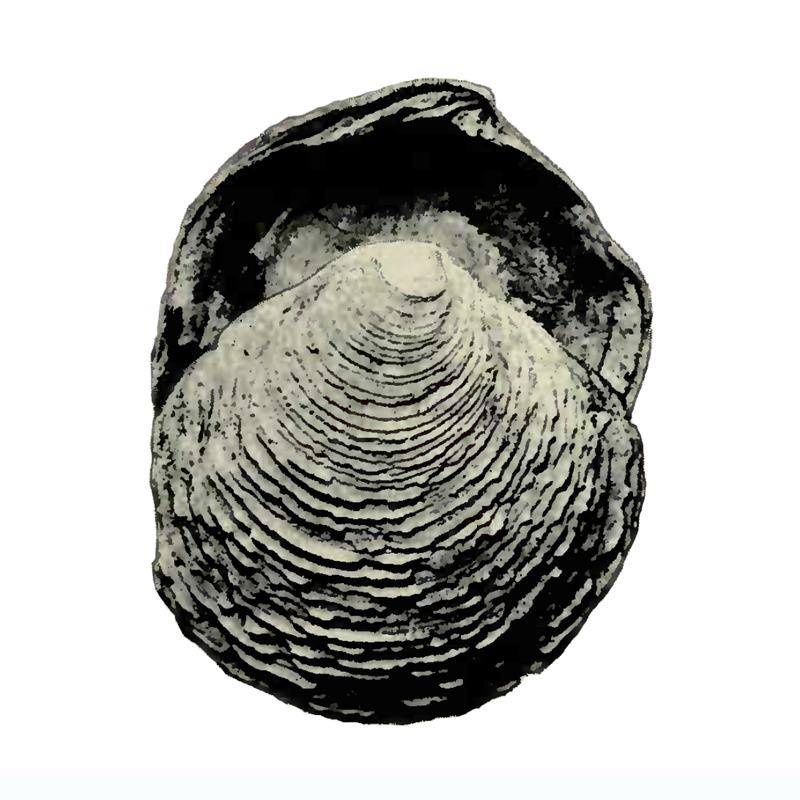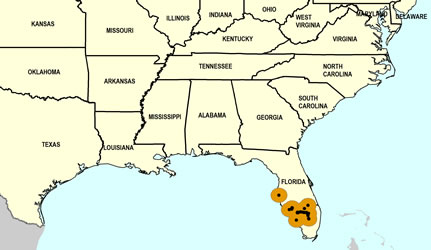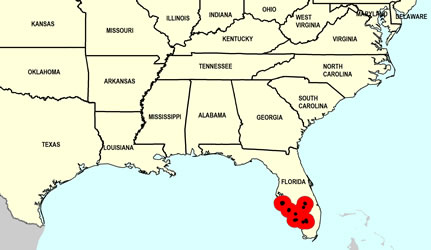
Armimiltha disciformis

- Phylum: Mollusca
- Class: Bivalvia
- Order: Imparidentia
- Family: Lucinidae
- Genus: Armimiltha
- Species: Armimiltha disciformis Heilprin, 1886
Geological Range
Late Pliocene to Middle Pleistocene; Extinct.
Paleogeographic Distribution
Southern Florida.
Remarks
Original Description (from Heilprin, 1886, p. 94):
"Shell compressed, suborbicular, higher than broad, flattened on the umbonal slope; beak subcentral, acute, overlooking a deeply impressed lunule; ligamental sulcus profound; cartilage-pit oblique; cardinal teeth two in each valve, the posterior in the right valve, and the anterior in the left valve, bifid; anterior margin of shell impressed somewhat above the middle; muscular impressions elevated, the anterior ribbon-form, long and narrow, departing somewhat from the rather distantly separated pallial line; external surface ornamented with numerous distantly placed lines of growth, which at nearly equal intervals rise into rugose elevated lamellae; interior of shell longitudinally rugated.
Height, 2.5 inches; width, 2.4 inches.
This shell bears a similarity of outline to the Miocene Lucina Americana (L. anodonta), and is barely distinguishable from that species by external characters alone; the latter is, however, edentulous. Among recent forms it approximates L. Childreni, but that species is inequivalve."
Stratigraphic Occurrences
- Middle Pleistocene
- Bermont Formation (S. FL)
- Early Pleistocene
- Caloosahatchee Formation (S. FL)
- Late Pliocene
- Tamiami Formation (Buckingham Limestone) (S. FL)
- Tamiami Formation (Pinecrest Beds) (S. FL)





